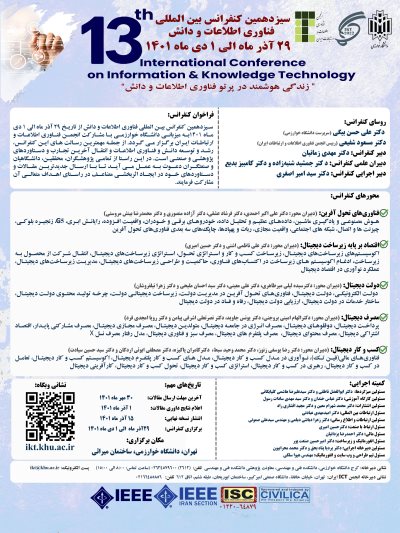0% Complete
Authors :
Keywords :
Abstract :
List of archived papers
Ayoub Parvizi - Dr Mohammad Kazemifard - Ziba Imani
سیدرضا قادریان خیرآبادی سیدرضا قادریان خیرآبادی -
Saeed Raisi - Saeid Ghasemshirazi - Ghazaleh Shirvani
صفورا اخلاقی - محمدباقر منهاج - بهروز معصومی
Mahdi Naderi - Hossein Momeni - Shayan Shahini
ُSomayeh Sohrabi - Koorush Ziarati - Morteza Keshtkaran
صبا عارفنیا - مهدی هاشمزاده - امین گلزاری اسکوئی
Hadi Rezaeikarjani - Mojtaba Valinataj
زهرا کلوندی - دکتر مهدی سخائی نیا زهرا کلوندی - مهدی سخائی نیا -
زهرا رحیمی تمندگانی - شهره آجودانیان




